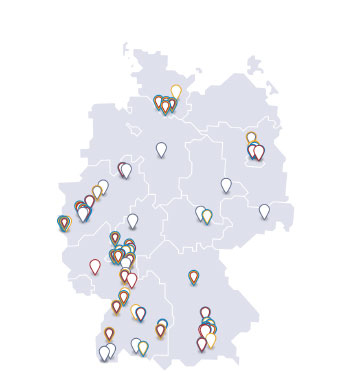AMNOG submission dossiers: Reductions necessary
Since the introduction of the AMNOG act in 2011, manufacturers must submit dossiers for value assessment to launch new drugs on the market in Germany. For this purpose, templates must be used that contain detailed requirements for submission of study data and analyses.
The template is structured in five modules:
- Module 1 contains a summary,
- Module 2 contains general information about the new medicinal product,
- Module 3 contains information on the patient population and cost analyses,
- Module 4 is the core for the clinical assessment of the added benefit,
- Module 5 is a confidential annex containing the underlying documentation including paper references, clinical study reports (without patient individual data) and regulatory authority reports.
Modules 1-4 of the submission dossier of the manufacturer are published with the clinical assessment report.
Massive requirements for data submissions
Right from the start of the AMNOG the G-BA set very comprehensive requirements for data submissions with great granularity. Since then, the dossiers of the manufactures offered unprecedented transparency of study data, containing far more analyses than, for example, the reports of regulatory authorities or study registries [1]. However, the requirements were extended even further in 2020. The G-BA added another layer of granularity regarding the analyses of adverse events (AE), additional data-cuts, time-to-event-analyses with outcome-plots, efficacy endpoints (incl. sensitivity analyses) and subgroup analyses.
The extension of the data requirements led to an extreme increase in the number of analyses, which caused the average dossier size for Module 1-4 to increase by a factor of 4 to 5 from approx. average 750 to 3.500 pages (20.000 to even 40.000 pages in individual cases). The preparation of such dossiers has been associated with enormous time and effort for the manufacturers. Dossier preparation in Germany takes on average 12 months and costs 800.000 EUR.
Data submissions are largely not considered in assessments
Since the extension of the data requirements, their necessity has been debated extensively. Firstly, because they openly called into question the clearly sufficient conditions for the high-quality benefit assessments in the preceding years. Secondly, because it is not apparent to what extent submitted data is indeed used for assessment and decision making.
Downloads:
- Ergebnisbericht "Neue Anforderungen an AMNOG-Dossiers: Untersuchung der Berücksichtigung von Auswertungen im Rahmen der Nutzenbewertung durch IQWiG und G-BA [PDF]
- Report "New requirements for AMNOG-dossiers: Investigation of considered evaluations in the context of the benefit assessment by IQWiG and G-BA" [PDF]
A recent study commissioned by the vfa showed that on average only 23 % of the analyses submitted by the manufacturer were used by the IQWiG and/or G BA, with only 16 % being included in the benefit assessment report or decision documents and another 7 % being excluded with given reason [2]. Conversely, this means that 77 % of the analyses are not appreciated at all. Submitted data largely not used, were subgroup analyses (only 14 % considered), outcome plots (23 %) and to lesser extent efficacy endpoints (incl. sensitivity analyses) (39 %) and AEs (52 %). Further, the requirement for different data cuts also had a relevant influence. This suggests that large parts of the data requirements are not necessary.
You can also download this chart as a PDF file.
AMNOG dossier templates should be reduced to necessary analyses
The study reveals a clear need for action. First, G-BA and IQWiG should ensure more transparency about the use of the submitted analyses, by commenting analyses regarding their contribution to the overall result. Secondly, the G-BA should critically review the German dossier template and reduce the data requirements to necessary analyses:
- Subgroup analyses should be confined to selected variables and central endpoints of interest. The selection should be made as part of the G-BA consultation and informed by clinical or pharmacological rationale.
- One main data cut with the largest information content should be required. Additional data cuts for individual endpoints could be submitted when they provide more information, without requiring all other endpoints for these data cuts.
- Sensitivity analyses should be confined to special data situations and central endpoints.
- Outcome-Plots should be confined to specific endpoints that show statistical significance.
- Request for adverse events according to MedDRA SOC/PT should be revised and the threshold values relevantly increased.
Since the entry into force of the European HTA Regulation in January 2022, German stakeholders have expressed their intentions to fit EU-HTA to member states needs and to use national dossiers as blueprint. Massive requirements for data submissions, which are largely unnecessary should be avoided in joint European data requests. Dossier preparations using the German blueprint will not be feasible in the compressed timelines of the European HTA process. The European Commission and the Member States must ensure a feasible European submission template for joint clinical assessments that includes only necessary analyses.
References
(1) Köhler et al. "Information on new drugs at market entry: retrospective analysis of health technology assessment reports, journal publications, and registry reports." BMJ 2015;350:h796
(2) Advanced Medical Services (AMS) - Report "New requirements for AMNOG-dossiers: Investigation of considered evaluations in the context of the benefit assessment by IQWiG and G-BA", 01. July 2021




